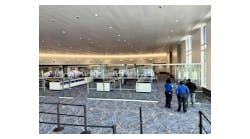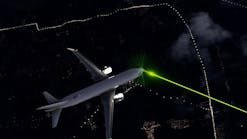Lakeland Linder International Airport Completes Major Security Overhaul Ahead of Commercial Service Return
With the return of commercial passenger service, Lakeland Linder International Airport (LAL) embarked on a comprehensive security enhancement project to align with federal regulations and ensure a seamless experience for travelers.
Driven by the airport’s strategic vision and community demand, these upgrades have positioned LAL as a critical gateway for Central Florida. The project incorporated state-of-the-art security measures, including advanced screening technology, perimeter fencing improvements, and modernized access control systems, ensuring compliance with Title 49 CFR Part 1542.
Strategic Vision
For more than a decade, LAL operated without commercial passenger service, focusing primarily on general aviation and cargo operations. As commercial flights returned with the launch of Avelo Airlines in June 2024, the airport leadership, led by Airport Director Kris Hallstrand, recognized the need to modernize security infrastructure.
“Our goal was to bring the airport up to modern-day federal requirements,” Hallstrand said. “With the significant growth in Central Florida and Polk County, we needed to ensure a safe and efficient travel experience for our passengers while maintaining compliance with evolving TSA standards.”
The enhancements reflect LAL’s broader mission of providing a convenient alternative to congested regional hubs, such as Orlando International Airport (MCO) and Tampa International Airport (TPA), while prioritizing security and operational efficiency.
Key Enhancements
A critical component of the project involved revamping the terminal’s security infrastructure to accommodate modern screening requirements. Enhancements included:
- Installation of a new Computed Tomography (CT) scanner, offering advanced 3D screening capabilities for detecting prohibited items.
- Addition of an Exit Lane Breach Control (ELBC) system, which automates security monitoring for deplaning passengers, reducing staffing demands.
- Expansion of sterile area security, including the integration of questioning and equipment storage rooms, as well as high-security locksets.
- Upgrades to the airport’s access control system, shifting from HID access panels to cloud-based Mercury controllers for improved reliability.
Perimeter Security Improvements
To further strengthen security, LAL addressed vulnerabilities in the airport’s air operations area (AOA). With funding from the Florida Department of Transportation (FDOT), the airport completed a one-mile-long perimeter fence upgrade, which included:
- Replacement of 5,120 feet of chain-link fencing, with an additional 13,950 feet of barbed wire reinforcement.
- Installation of seven advanced gate cameras to enhance surveillance.
- Replacement of multiple vehicle and pedestrian gates to meet updated security standards.
Collaboration is Key
Given the complexity of the project, collaboration between the airport, TSA, and industry consultants played a pivotal role in ensuring its success. TSA worked closely with LAL to review design plans and provide regulatory guidance throughout the implementation process.
HDR Inc., the prime consultant on the project, leveraged its aviation security expertise to design a functional and compliant terminal layout. William Bowdoin, Aviation Project Manager at HDR, highlighted the importance of coordination in navigating the regulatory landscape.
“We established recurring meetings with TSA representatives to ensure that all design elements aligned with Part 1542 requirements,” Bowdoin said. “By proactively addressing security needs, we were able to create a solution that meets modern standards while allowing for future scalability.”
Kevin Ashton, HDR’s Aviation Architecture Principal, emphasized the importance of adaptability in airport security design.
“Every airport has unique spatial and operational constraints,” Ashton said. “For Lakeland, we had to modify certain TSA guidelines to accommodate the existing infrastructure, ensuring that security enhancements were both functional and efficient.”
Impact and Lessons Learned
Since the completion of the security enhancements, LAL has received overwhelmingly positive feedback from passengers and airline partners. The streamlined security process, facilitated by advanced technology and improved infrastructure, has enhanced the overall travel experience.
Hallstrand attributes the project’s success to clear communication and stakeholder collaboration.
“There were a lot of moving pieces, but our approach was to engage TSA, FDOT, and our consulting partners early and often,” she said. “Breaking down silos and maintaining open dialogue ensured that we met all security requirements while staying on schedule.”
For airports undergoing similar upgrades, Ashton advises early engagement with federal agencies and a thorough understanding of evolving security technology.
“Airports looking to modernize should prioritize flexibility in their designs,” he said. “Security standards continue to evolve, and having scalable solutions in place will help future-proof facilities.”
With security enhancements in place, Lakeland Linder International Airport is looking ahead to continued growth and modernization. Hallstrand sees this project as the foundation for future infrastructure improvements, including terminal expansions and additional passenger amenities.
“We’re just getting started,” Hallstrand said. “This was a crucial step in preparing for the return of commercial service, but our long-term vision is to ensure LAL remains a top choice for travelers seeking convenience, efficiency, and top-tier security. Our upcoming terminal master plan will guide us in shaping the airport’s next phase, ensuring we continue to meet passenger needs while staying ahead of industry standards.”




